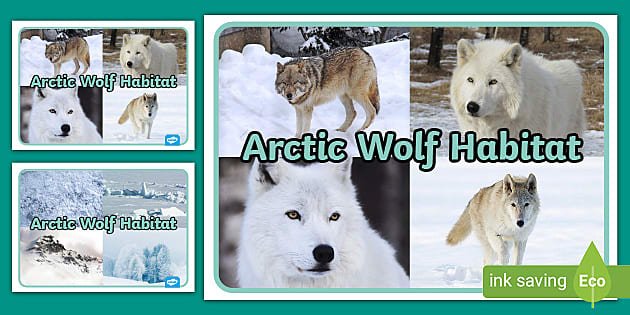
In simple terms, wolf worms are like the teenagers of the insect world—young, curious, and exploring their surroundings. They tend to find cozy spaces in the environment that cater to their survival needs. These habitats often include places where their primary host, small mammals like squirrels and rabbits, live and interact. So, if you’re wondering about what keeps these worms happy and thriving, let’s dive into the habitat conditions that encourage wolf worm activity!
What Are Wolf Worms?
Wolf worms, or *Cuterebra* larvae, belong to a family of flies known as cuterebrid flies. These larvae are fascinating creatures that develop within the bodies of small mammals. Imagine an unexpected houseguest that takes over your living room—this is what wolf worms do to their hosts!
When the female fly lays her eggs in grassy or wooded areas, the larvae find their way into a host, usually through wounds or natural openings. Once they’re inside, they’ll feed and grow until they’re ready to emerge. This lifecycle highlights the importance of their habitat, as it directly impacts their survival and reproduction.
You might be wondering, why do they prefer certain areas? Well, it’s all about finding the right conditions. They need environments that offer both shelter and accessibility to their hosts.
Ideal Habitats for Wolf Worm Activity
Wolf worms gravitate towards specific habitats where they can thrive. Think of these environments as their favorite hangouts—places that support their growth and development. Some ideal habitat conditions include:
- Wooded Areas: Dense forests or brush provide excellent cover and are prime spots for small mammals.
- Grassy Fields: Long grass gives shelter to potential hosts and is where wolf flies typically lay their eggs.
- Near Water Sources: Areas close to rivers or ponds can attract more wildlife, increasing the chances of finding hosts.
In each of these locations, wolf worms can easily connect with their hosts. The key is that the habitat needs to have a good mix of **cover** and **food sources** for the small mammals.
Climate and Temperature Effects
Believe it or not, climate plays a huge role in wolf worm activity. Just like we prefer a comfortable room temperature, these larvae thrive in specific weather conditions. Here’s how climate impacts them:
- Mild Temperatures: Typically, wolf worms prefer areas with mild weather, as extreme cold or heat can be detrimental. They are most active during warm months.
- Humidity: Higher humidity levels can make the environments more conducive for their hosts, which promotes the overall presence of wolf worms.
- Seasonal Changes: In regions with distinct seasons, spring and early summer provide the perfect conditions for wolf flies to lay eggs, leading to higher larval activity.
So, if you’re in an area with a friendly climate, don’t be surprised if you bump into some wolf worms!
Vegetation Types That Support Hosts
The type of vegetation in an area can significantly determine whether wolf worms will thrive. Their survival heavily depends on the availability of suitable hosts, which are often small mammals residing in specific types of foliage. Let’s break down some supportive vegetation types:
- Thick Shrubs: They offer shelter and protection from predators, making them ideal for small mammals.
- Wildflowers and Grasses: These attract insects and provide food for small animals, creating an ecosystem where wolf worms can flourish.
- Decaying Wood: This can house various small creatures that wolf worms rely on for their lifecycle.
In short, a rich variety of vegetation can lead to a bustling habitat that supports both the small mammals and the wolf worms that depend on them.
How Human Activity Affects Wolf Worm Habitats
Human activities can have a big impact on the habitats of wolf worms. Urban development, farming, and deforestation can alter environments and affect the abundance of their hosts. Here’s how:
- Habitat Fragmentation: When land is cleared for buildings or agriculture, it can disrupt the habitats of small mammals, making it harder for wolf worms to find hosts.
- Pollution: Chemical runoff or waste can degrade natural habitats, affecting the overall ecosystem health.
- Climate Change: Altered weather patterns can lead to unsuitable conditions for both the larvae and their hosts.
Understanding how human actions impact these habitats is crucial for preserving environments that support wolf worms and their ecosystems.
Signs of Wolf Worm Activity
If you’re interested in spotting wolf worms in the wild, there are certain signs you can look for. Knowing what to observe can enhance your experience in nature!
- Infected Hosts: Look for small mammals showing signs of infection, such as swelling or unusual behavior, which may indicate the presence of wolf worms.
- Eggs on Fur: You might spot small eggs adhered to the fur of potential hosts, hinting that wolf flies have recently been active in the area.
- Larval Emergence: In late summer, you might even see larvae emerging from their hosts as they transition to adult flies.
Seeing these signs can give you a glimpse into the fascinating life cycle of wolf worms!
Conservation and Awareness
As with many creatures, understanding the habitat conditions that encourage wolf worm activity can foster greater awareness about the importance of ecosystems. Conservation efforts play a vital role in preserving habitats, which helps maintain the delicate balance of nature.
Promoting awareness about wolf worms may even encourage people to care more for their local environments. You might discover that these larvae are a critical link in the ecosystem, serving as both parasites and food sources for other wildlife.
In summary, being informed and making conscious choices can positively influence the habitats that support wolf worms—and, in turn, the entire ecosystem.
With all this in mind, taking a deeper look at the conditions that foster wolf worm activity can provide valuable insights into the intricate web of life. Next time you’re out in nature, keep an eye out for those telltale signs and appreciate the delicate balance that supports these intriguing creatures!
